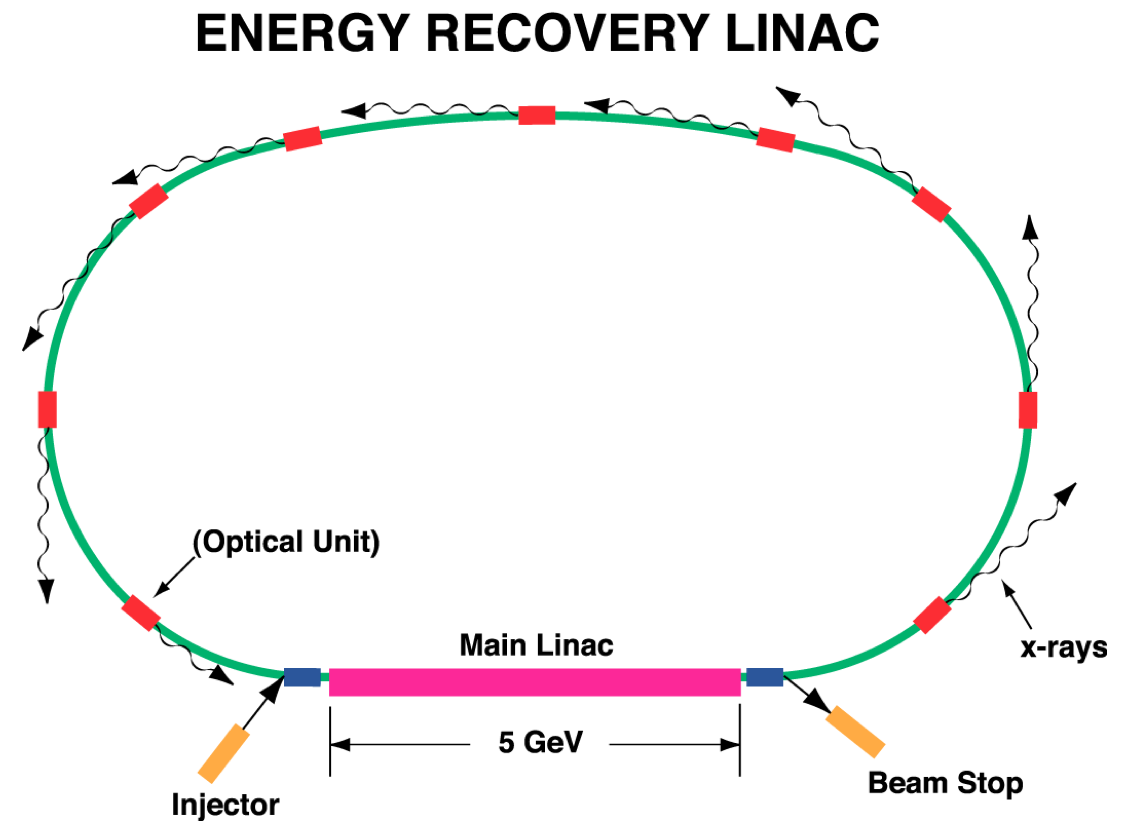Introduction to the ERL

Basic principle of operation
Electro-magnetic fields in microwave cavities can accelerate as well as decelerate electrons. In an ERL, electrons are injected in these cavities at the proper time for acceleration, which produces a high energy electron beam. This electron beam is then forced to oscillate to the right and left of their mean path in an arrangement of many horse-shoe magnets of alternating orientation called an undulator. As a consequence of this oscillation, X-rays are produced and the beam loses about 0.1% of its energy. The 99.9% of its remaining energy can be recaptured into the electro-magnetic fields when the electrons are re-injected into the linac at the proper time for deceleration. Subsequently this energy is available for the acceleration of another bunch of electrons.
Every bunch of electrons therefore first traverses the linac for acceleration, then a return loop containing undulators leads it from the end of the linac back to its beginning, and finally the bunch traverses the same linac for deceleration. While a conventional storage-ring X-ray source recycles electrons at high energy billions of times, unfortunately compromising the beam size, the ERL thus sends each bunch of electrons with its very small size through the undulators only once, but it reuses its energy multiple times. The very small beamsize is key to moving materials investigations to new frontiers.
Because the energy of the electrons is periodically taken from and then put back into the electro-magnetic fields in microwave cavities, these cavities must constantly be operated. Conventional cavities made of some conducting material, e.g. copper, cannot be operated constantly with high fields since they would become too hot. This is the reason why the ERL will employ novel
superconducting microwave cavities which are cooled to -456 Fahrenheit to produce hardly any heat when operated continuously at high fields.
At Cornell, a prototyping facility was set up to show that the desired very small beam sizes can be produced and injected into an ERL. This project was successful in showing the beam parameters suitable for a hard-x-ray ERL can be produced. A new world record in the beam current from a photo-emitter gun was achieved, as well as a world record in the normalized brightness for electron bunches.
Currently, CBETA, a prototyping facility for the worlds first multi-turn ERL with SRF acceleration is being constructed at Cornell.


